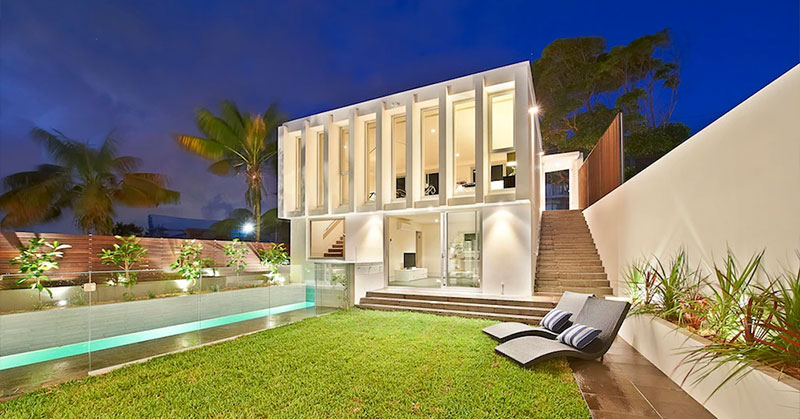Tips for your reno from Julian Brenchley, The Block's architect
Tips for your reno from Julian Brenchley, The Block's architect
Home comfort tips
What are the important things to consider when renovating your home? The Block's architect gives you his thoughts on making smart choices & adding value.
 Julian Brenchley has been a practicing architect for more than 25 years, and has been working with The Block since 2003. We recently sat down with him for a chat about making smart choices when renovating and how to add value to your home if you’re thinking about reselling.
Julian Brenchley has been a practicing architect for more than 25 years, and has been working with The Block since 2003. We recently sat down with him for a chat about making smart choices when renovating and how to add value to your home if you’re thinking about reselling.
QTell us about your approach to architecture
My practice is varied across a lot of forms of architecture, after all variety is the spice of life. I’ve been working with The Block since 2003, it’s been a bit of a crazy ride but a great journey overall. My approach is to centre on the client’s outcome; it’s an exercise in listening.
We bring to the table a focus on environmental considerations, always considering the building lifecycle. We always design to budget, arriving at solutions which everyone is happy with. We try to implement passive solar design wherever possible, like north-facing living rooms, shaded windows, etc. I’m currently renovating my own home in Sydney’s lower north shore, so I’m taking my own medicine right now, asking myself realistic questions.
QWhat’s the most important things to consider when renovating your own home?
Fundamentally, a house needs to be more than photographic and design elements, it needs to easily accommodate your life. It needs to be a home. It’s important that you consider comfort and thermal mass as well as stylistic choices and resale timing.
Be mindful of changing tastes – paint colours are easily changed but building a chessboard into the floor of the dining room might not be a great decision. A home is your greatest asset so at some stage you'll be considering selling, and you do have to consider who the next person might be, but you need to balance this with a house that is personalised to a point. However, houses are generally robust enough for quirky decisions to be reversible; you can remove the pole-dancing pole when it comes time to resell.
QIf I’m planning on reselling my home, what renovation can add the most value?
It depends on the timing. Twelve months to 5 years are very different markets. If you’re selling within 12 months, you don’t want to be throwing a lot of money at it. Paint, simple window treatments, upgrades to your bathrooms and kitchen are what is going to sell the house. If you’re going to live in it for 5 years before selling, then you make it more your own, invest more in what you want and in your own comfort.
If it’s an older house, retrofitting ceiling insulation is one of the best things you can do – that’s a big winner. If it’s an elevated timber floor with no underfloor insulation, that’s a cold house. Getting underfloor insulation is relatively accessible in terms of cost and improves the thermal performance, and the acoustic difference will be noticeable when people are inspecting. Double glazing might be a stretch in an old house but it’s worth considering for the thermal performance. Roof vents are another good way to add to thermal performance.
QIs thermal performance really a concern for house buyers?
The market is more concerned with what a house looks like, or its location, but it is rapidly becoming more educated and aware of the lifecycle costs. Even the prettiest house in the street will lose out if it’s solely reliant on air-conditioning for comfort. Cold and damp houses aren’t great and people are becoming more aware of this. Think about what the average person would expect in terms of energy efficiency as opposed to aesthetic appeal. Energy efficient lighting and power sources such as solar power and batteries add value to the house. Future proofing is the way to think about it – people are aware of rising energy costs so thermal performance and solar panels are the key to that.
“Super insulation” is a term I’ve invented and it means to try not to rely on just one product for your comfort, but rather to add and layer products. So it’s not just adding wall insulation, you also put in wall wraps, sarking, allow eave overhang, add foilboard. It can all get quite technical, but think of it in terms of an esky. How does the esky know to keep the drinks cold? Or to keep your soup warm? The term is “thermal break”: thermally insulating one body of air from another. Put a bag of ice in an esky and it’ll stay there for the best part of two days. Put it outside the esky, and it’ll be gone in two hours. The esky is not doing anything technical, just something very simple with material properties that allows embodied energy to be maintained in difference to the external envelope. The esky isn’t smart, it just works. Your home’s walls, floor and ceilings should be the same.
The greater public has been sold a furphy in terms of what we think is acceptable internal comfort. You shouldn’t have to close off your entire house in summer to keep it comfortable with the air-conditioning running at full blast 24/7. Build in thermal comfort, then get ceiling fans, add external shading to stop the sun hitting the windows etc. Solar panels are not just a great power supply, they also stop the sun hitting the roof which is adding another layer of thermal comfort in summer. The roof colour can also be important, if that’s within your scope – lighter coloured roofs provide better thermal performance!
QWhat if I’m just renovating one room, what are the tips for that project?
Take everything in a global sense. Sustainable product choice is important: it’s no good choosing energy efficient lights if you’re also installing timber flooring from a plantation in Indonesia. Choose low VOC paints for the walls. Retrofit insulation in the ceilings and walls – the batts are easily handled and not toxic, the technology now is so much more advanced, and you’ll really feel the difference even in that one room. And think about the concept of “embodied energy” – the tiles from Italy may be beautiful but they took a lot of energy to get to your home in Australia.


 Click here to view a slideshow of some of Julian's past projects
Click here to view a slideshow of some of Julian's past projects
